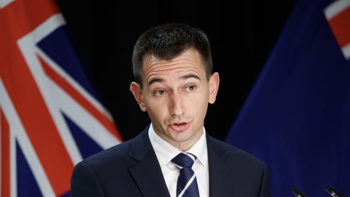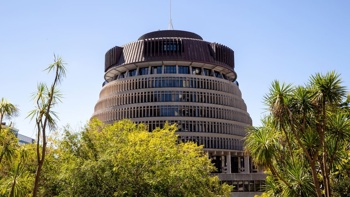
Wellington Water is investigating how contractors accidentally drilled into the main sewer running underneath the capital.
The interceptor is known as the highway for transporting the city's wastewater to Moa Point for treatment. It is so critical that a spontaneous failure can have "catastrophic" health and environmental consequences from uncontrolled discharge.
Wellington Water network strategy and planning group manager Julie Alexander said the drilling incident happened at the beginning of this month.
Contractors were drilling to install earthquake strengthening ground anchoring foundations to an existing building in Willis St, she said.
Alexander said investigations were ongoing as to exactly what happened, but confirmed the damage was limited to two 170mm drill holes in the interceptor's roof.
"It is fortunate that only small diameter drill bits were involved as had larger equipment been involved, there could have been substantial damage to this critical piece of city infrastructure, and potential environmental impacts."
Luckily, the interceptor remains operational but it will need to be fixed.
"Wellington Water is investigating how and why the event occurred as we develop remediation options, which include carrying out repairs from the surface, or possibly entering the interceptor to carry out repairs from the inside," Alexander said.
/cloudfront-ap-southeast-2.images.arcpublishing.com/nzme/MNCTHZHFZLYOTE3JDVXJRDDI2A.jpg)
The interceptor is known as the highway for transporting the city's wastewater and runs underneath the CBD. Photo / Mark Mitchell
Requirements were attached to the building consent for the work, following recommendations made by Wellington Water, to protect the pipes underground.
Alexander said they were still establishing whether those requirements had been met when the incident happened.
In 2020 a section of the interceptor had to be repaired after severe corrosion was discovered, threatening its structural integrity.
The top of the pipe had been subjected to a hydrogen sulphide "attack" where gas from the sewage becomes sulphuric acid and then eats through the concrete.
A consent application at the time said if the pipe spontaneously failed, it would cause a sewage spill that could potentially generate significant disruption, reputational, environmental, and cost impacts due to the asset's critical nature.
The original interceptor was constructed in the late 19th century in response to increasing cases of typhoid and cholera, which were attributed to poor sanitation.
It has gradually been added to as Wellington's population has grown.
Parts of it are more than 120 years old, yet every day 67 million litres of wastewater flows through the interceptor.
Alexander said the city's underground infrastructure was substantial and complex.
"The central interceptor is one of the city's most critical pieces of infrastructure, so taking the time to accurately identify the placement of pipe work and wherever possible not build over it should be standard practice."
Take your Radio, Podcasts and Music with you









